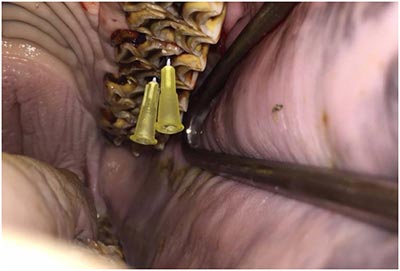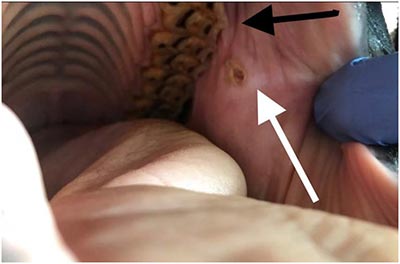
by Dr. Brad Tanner
Why float teeth, ancient wild horses seem to have done fine without dentist?
Good point and I agree it seems ancient wild horses did great without rasping of their teeth. The horse has evolved to be a grass consuming machine. Through the course of millennia, they have developed long teeth that continue to erupt (grow) throughout life.
It is important to know that the horse evolved to graze and chew up to 16 hours daily on coarse, fibrous grasses. Modern domesticated horses may spend much of their time in stalls, eating concentrates and hay, chewing much less than those on pasture.
Modern domesticated horses with pasture access typically graze on manicured grasses that are comparatively delicate and lack the gritty silica content consumed by their ancestors and cause less tooth wear. Additionally, as a horse chews grain its lower jaw does not move side to side with the same amount of travel as when chewing grass.
This decrease in chewing motion results in much sharper points developing and at a quicker rate then in horses eating only grass.
Who should float my horse’s teeth?
A skilled veterinarian with experience in the field of dentistry is the most highly educated and trained individual that could provide this service. This individual will be best prepared to assess the oral and overall general health of the patient.
There are times when your horse’s general health may be affected by problems identified in the mouth and early detection can be paramount. There are certainly other providers with varying levels of training that also are available in many countries for dental prophylaxis.
How does the chewing motion play a role into my horse developing sharp cheek teeth?
<p;> The upper cheek teeth are set wider in the horse’s skull than the lower cheek teeth. Another way to say this is that the maxilla (upper jaw) is wider than the mandible (lower jaw) and as the horse chews side to side, the lower and upper teeth grind across one another.
This narrow bottom jaw is unable to move all the way across the surface of the upper cheek teeth. This incomplete range of motion allows an area of the outside of the upper cheek teeth to not be worn away from chewing, the same is true of the inside of the lower cheek teeth.
The lack of attrition to these areas of the teeth coupled with the fact that the horse’s tooth continues to erupt (grow) approximately 3mm annually is the reason horses form sharp points and require floating.


When should my horse have a dental exam and floating performed?
We currently recommend that every horse have an examination performed by a veterinarian annually. However, it may be necessary to check some horses more frequently. Times when this may be necessary include young horses shedding caps, horses with limited pasture turnout, horses on a high grain diet and those in year-round competition where unwanted oral pain from sharp points may cause pain and alter head carriage.
Many horses will show clinical signs that they need their teeth examined. These signs include: dropping excessive grain while eating, holding head to one side while chewing, bit avoidance, and eating slowly. If your horse is demonstrating any of these signs it may be time to have a dental exam performed.

What should my veterinarian do for my driving horse’s dental?
There are certainly differences amongst the many equestrian disciplines: driving, racing, western, dressage, show jumping, etc. While each discipline is unique in its’ own way, there is the common thread that rider and horse must be able to communicate.
This communication is accomplished most often through the bridle and bit and paramount for both performance and rider / driver safety. The most important thing that should be done for your horse is a complete oral exam. This should include close evaluation of the teeth and the supporting soft tissues of the mouth. This examination may identify sources of discomfort that are contributing to poor performance or behavioral changes.
Abnormalities in the soft tissue of the mouth or very sharp points on the teeth will cause a horse increased discomfort with bit contact or pressure from cheek pieces. For these reasons it is the examination that is more valuable then simply the dental / tooth floating.
If sharp enamel points are present they can be rasped away by hand or motorized tools, this will reduce the chance of the cheeks or tongue being traumatized by these sharp areas.


Summary
Annual dental examinations should be a part of your horse’s general health and wellness plan. These exams will most often include dental floating and this may be necessary biannually for some horses.
Contact your veterinarian for additional information and to develop a plan that best suites the needs of your horse and stable.
All photos courtesy of Rood & Riddle. Find out more in our section on Dentistry.

































